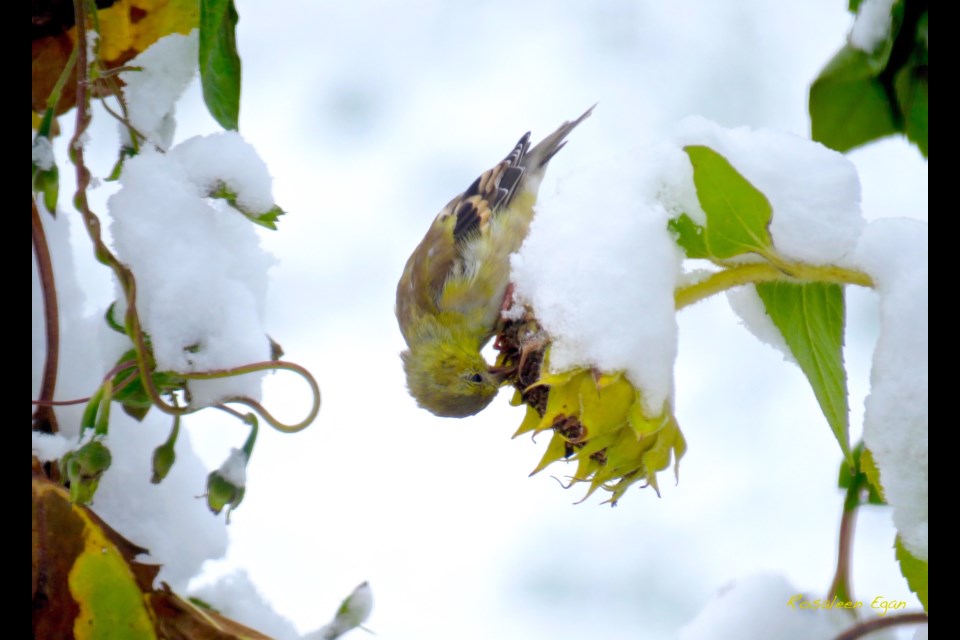In my last column I mentioned the American Goldfinch and its subdued colours in the winter months. I also mentioned growing native plants to naturally provide food and habitat for birds. I am following that up with some photos of molting goldfinches eating sunflowers seeds direct from the plant, and feeders.
According to allaboutbirds.org site American Goldfinches eat seeds almost exclusively. It goes on to say: “Main types include seeds from composite plants (in the family Asteraceae: sunflowers, thistle, asters, etc.), grasses, and trees such as alder, birch, western red cedar, and elm. At feeders prefers nyjer and sunflower.”
Sunflowers are simple to grow and have great effect. They add spectacular colour and height to your garden. Some of these may be hybrids, not strictly native forms. Besides humans, sunflowers are attractive to butterflies, hummingbirds, and bees in the summer and others in the fall and winter.
Blue Jays, various woodpeckers, chickadees, nuthatches, Dark-eyed Juncos and more join goldfinches in eating sunflower seeds from the dried plant through the winter. The beak of the goldfinch is small, as is the bird itself, so it is surprising to some that it is able to crack the shell of a sunflower seed and eat the kernel inside.
Just as sunflowers go through a transformation preparing for winter, so do American Goldfinches. Actually, goldfinches molt twice a year. This can be a bit confusing as the male and female differ in colouration, and they each have different seasonal looks. Then, you can add in juveniles for yet another look. It’s kind of fun to be able to change up your appearance. We do the same thing with our clothing selections.
It takes goldfinches six to eight weeks starting in September to full replace all their feathers, the males going from bright yellow, with a black cap, black wings with white marks, to a drab overall olive with dull wings and two pale wing-bars.
As spring arrives they once again grow new feathers. Males grow bright yellow ones this time, but the wing feathers and tail remain from the fall. Sibleyguides.com says, “As these wing feathers get older the pale buff edges fade to white and disintegrate, so that by the end of the summer the wings look essentially all black.”
Breeding females are more olive than males, and a duller yellow beneath.
American Goldfinches are found across the southern portion of Canada. Some move a little south through the winter, but in Southern Ontario the breeding and wintering grounds overlap.
Goldfinches are happy social birds to have around. Even in their duller colorations they sing, and their undulating flying pattern is a fun thing to watch no matter what time of year they visit.
I share experiences of bird visitors to this property with readers every couple of weeks. Until next time, keep your eye to the sky, and look for birds that may come by.
Rosaleen Egan is a freelance journalist, a storyteller, and a playwright. She blogs on her website rosiewrites.com



